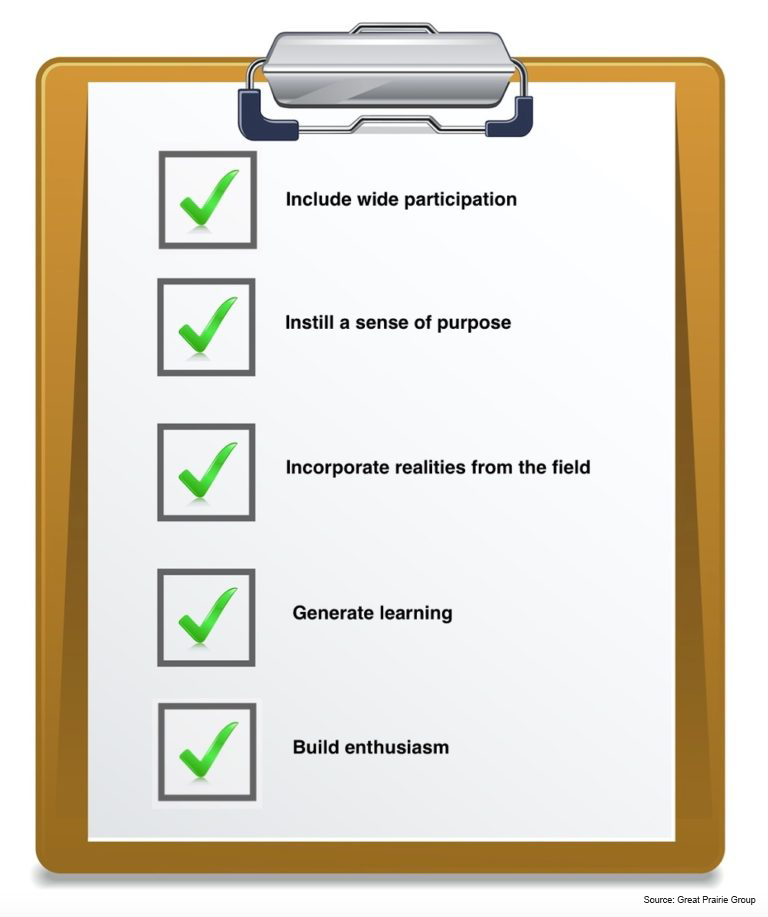The strategic planning process translates the long-term objectives of the firm into short-term “strategic” operating initiatives. In so doing, executive management must build company-wide consensus to get managers and employees onboard. Unquestionably, consensus sharply increases the likelihood of successful strategy execution. But how do you do it? A few best steps can make a big difference.
CONSENSUS DRIVEN STRATEGY EXECUTION
While strategy formulation is the province of the board, strategy execution takes place at the operating level. When it comes to strategy execution, front-line actions and tactical decisions by mid-level managers and employees are what count. Strategic planning fills this gap.
For the strategic planning process to work mid-management and their reports needs to feel confident with the program and onboard with it. They need to feel empowered and they need to be able to act “strategically” in the short term. Ultimately their consensus is needed. Without it, even the best-laid strategic plans are bound to fail.
HOW DO YOU BUILD COMPANYWIDE CONSENSUS?
Executive management can follow five steps to embed companywide consensus within the strategic planning process.
Steps in Building a Consensus Driven Strategic Planning Process

I. Include Wide Participation
People responsible for managing value-added activities in key organizational units (divisions, departments, functions) must participate actively in the strategic planning process. The reason is that the implementation of strategy cannot be solely the province of the CEO and the senior executive team. Senior leaders must foster a sense of shared purpose where people feel that their contribution can make a difference. Senior executives must engage in an open exchange and share information about the strategy of the firm, its objectives, and why. Strategic planning discussions need to be “public” within the confines of the company – meaning that everyone understands that senior executives actively engage the collective input of the organization toward a shared purpose.
II. Instill A Sense of Purpose
Senior leaders must foster a sense of shared purpose where people feel that their contribution can make a difference. Senior executives must engage in an open exchange and share information about the strategy of the firm, its objectives, and why. Strategic planning discussions need to be “public” within the confines of the company – meaning that everyone understands that senior executives actively engage the collective input of the organization toward a shared purpose.
III. Incorporate Realities from the Field
For a strategy to deliver as promised, top management must use a structured framework that establishes a common dialogue with mid-level managers. As part of the dialogue, mid-level managers need to be able to relate the market obstacles and the competitive challenges that they face in their line of work. Those managerial areas that deserve special attention in bringing about high performance represent the critical success factors. Without this information, it is extremely difficult for executive management to ascertain whether strategic plans, initiatives, and related financial targets are reasonable and realistic.
IV. Generate Learning
Senior managers must foster the generation of learning. When people come together as participants in a new team, they contribute various sets of skills, knowledge, and points of view. A larger number and variety of ideas for solving a problem can be produced. The exchange of ideas can act as a stimulus to the imagination, encouraging individuals to explore ideas they would not otherwise consider. The interactive learning that takes place produces insights an solutions that would otherwise not be possible, which becomes a great motivator.
V. Build Enthusiasm
An important factor in building consensus is to create enthusiasm. To achieve it, senior management need to engage, empower, recognize and reward employees. So, when goals are agreed, which gives a common purpose to the group, individuals must be invited to be part of the vision. Teams must be empowered to be a force of change by asking them to develop solutions to major issues. They must be given the role and responsibility for implementing the solutions. And finally, they must be recognized for their achievement.
SUMMING UP
With these best practices in place, executive management can take confidence that strategy execution is not an isolated affair. In fact, the strategy will gain wider support during its execution.
Companies that are strong in strategy execution recognize that even with the best-laid plans, not every contingency is foreseeable. With company-wide consensus, however, managers and employees can prioritize their actions, make effective tactical decisions, exercise the right value judgments on competing resources, and act in alignment with the company’s business strategy.
As Jack Welch, ex-CEO of General Electric maintained: “You’ve got to deliver on short-range commitments, while you develop a long-range strategy and vision and implement it.”

